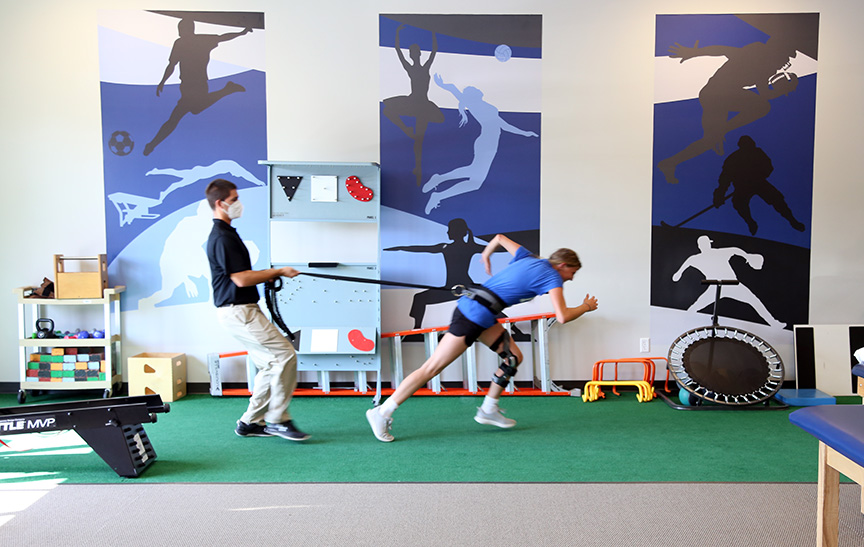News
Toe Walking in Children
Toe Walking
by Tasha DeKok, Physical Therapist, DPT
Typically, children begin walking between 12-15 months of age. Initial walking begins with a flat foot and a forward inclination of the body. As children grow older, they should transition towards striking with their heel first, especially by the ages of 2-3 years old. After this age, toe walking becomes a concern. Without a definitive medical reason, it is considered idiopathic toe walking, or toe walking without a known cause.
There are many possible reasons that a child might develop a toe walking pattern. If children ambulate early, they tend to have impaired strength at push-off resulting in a compensation with co-contraction of the tibialis anterior and gastrocnemius muscles. Additionally, children can have sensory processing concerns like tactile or vestibular dysfunction that increase their preference for toe contact on the floor. Toe walking prolongs the stance phase of gait and therefore increased stimulation to joint receptors for proprioceptive input, which is how children develop their positional sensation. Finally, children with weaker core muscles tend to lean forward, causing them to over time go up onto their toes when moving. Overall spending more time on their toes results in the gastrocnemius and soleus muscles and Achilles tendon becoming tighter which further limits the natural movement of the ankle.
Treatment for Toe Walking
Many parents wonder how to stop toe walking in their children. Therapeutic treatment for toe walking depends on what the cause is, how strong of a habit it is, how tight the muscles and tendons have become, and what other changes have occurred in the child’s foot and ankle as a result of walking this way. A physical therapist will conduct an evaluation and will then make an individualized treatment plan that is unique to the child’s needs. In severe cases, an orthotic or brace added to a child’s shoe may be indicated.
What should you do?
While it is possible for a child to outgrow toe walking, some research indicates this does not occur until 5 years old. Earlier intervention is important as this can help prevent further deficits that impact areas of development like balance and coordination. It is also important to address the underlying concerns for sensory processing or developmental issues with core strength. If you have a child over the age of two that is walking on his or her toes regularly, we’d love to assist your child. For more information about toe walking and possible treatments, please contact any of our three pediatric locations in Grand Island, Hastings, and Kearney.
